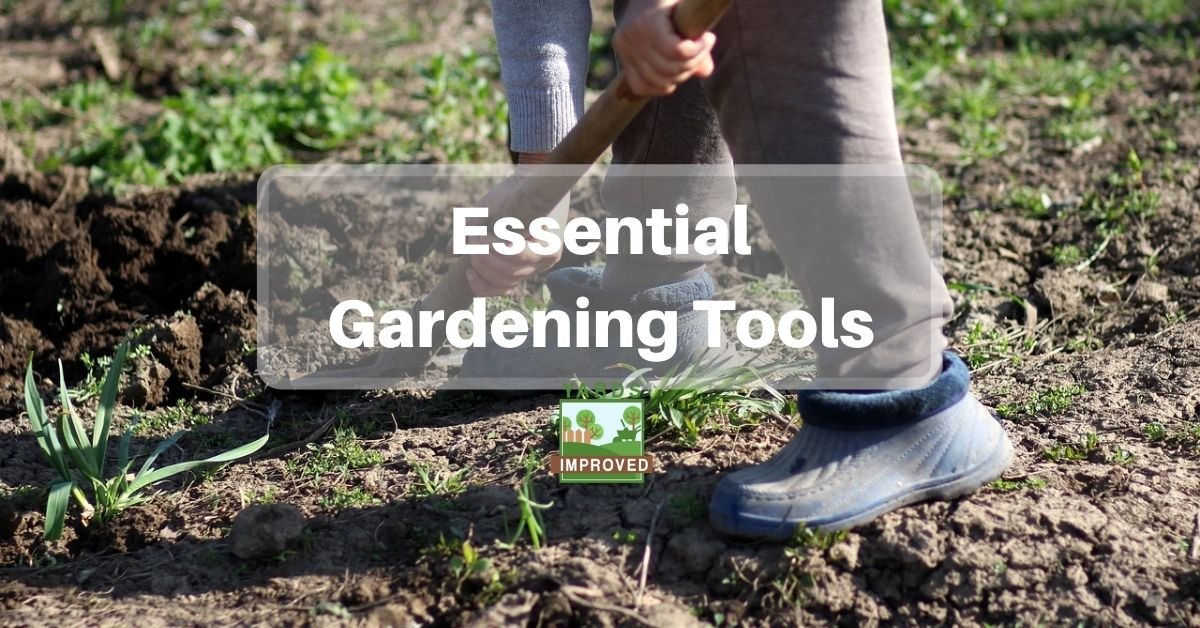Gardening is a joy to many. The end result, a beautiful garden is a delight to all. But even for those who enjoy the tasks involved, there’s a lot of hard work involved. Creating and maintaining a garden means preparing the soil, caring for the plants, controlling pests, and much more. All of that work means you need to have the right tools to do the job.
So what are the key tools you’ll need to be able to take good care of your garden? Let’s have a look.
The Tools You Need
As with most tasks, there are tools you really need to have, and then those that are nice to have. You might be able to get by without the latter, but the former are so basic that everyone should have them. Let’s look at some of the most important ones first.
Let’s start with the bigger tools that will help get your garden bed ready. You might only use these at the start of the season, but it’s work that has to be done, and you’ll easily find others uses for them throughout the year.
Check our guide to spring yard cleanup!
Garden Hoe
A hoe may be the first tool you’ll want to pull out, especially if your garden area is overgrown or clogged with dead roots or leaves. This tool will help break up and pull apart these annoyances.
At the same time, you might return to the hoe to help break up clumps of soil after you’ve already broken up the soil with a fork and a spade.
Large Garden Fork
A garden fork can serve several purposes in your garden. It will help you turn over the soil and break up large clumps of soil too. The larger forks allow you to get to about 10 inches of depths, which is great to help you make sure you’re preparing the soil well so that roots will be able to penetrate easily.
The fork will also come in handy in turning over and moving your compost.
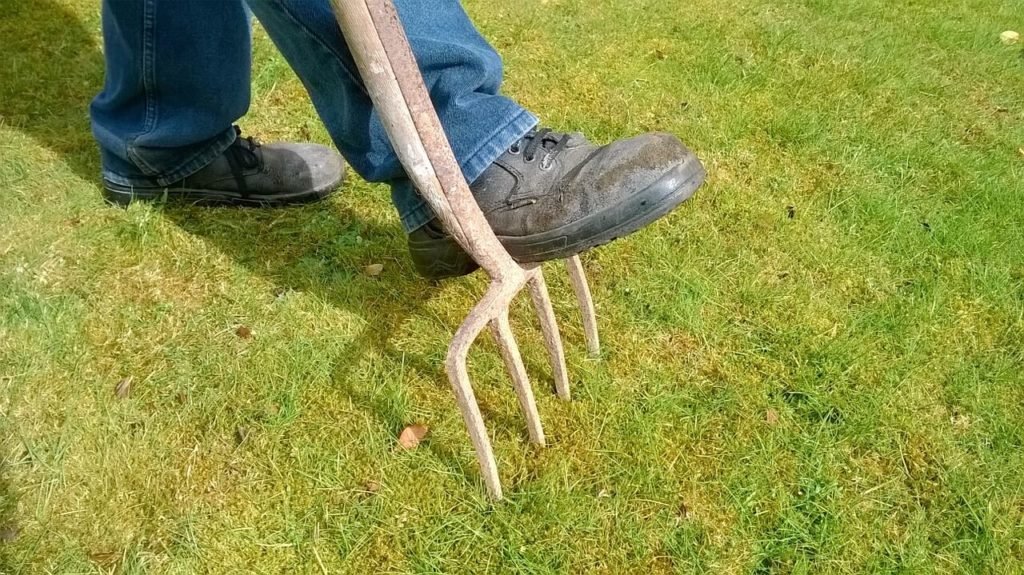
Digging Spade
Your digging spade is another essential for preparing your garden. When we refer to a spade, we’re talking about a square-bladed type that has a shorter handle. It’s not a hand tool, but neither is it the type of shovel with a very long handle or a curved blade.
Your spade will help you turn over the soil as well as keep well-defined edges to your garden bed. You’ll be able to use the top edges of the blade to push down with your foot and more easily cut through the soil.
You can also use the spade to turn over the soil then break it up with the fork. It also serves for adding compost; the fork again can be used afterward to help mix it in better.
Rakes
There are many types of rakes, but a garden rake and a leaf rake will serve you well for a garden bed.
The garden rake is more rigid and will help you level out the soil. It can also help break up any clumps that still remain after using the fork and shovel. Since it has smaller spaces between its tines, it will be easier to get those clumps that are too hard to aim at with the other tools.
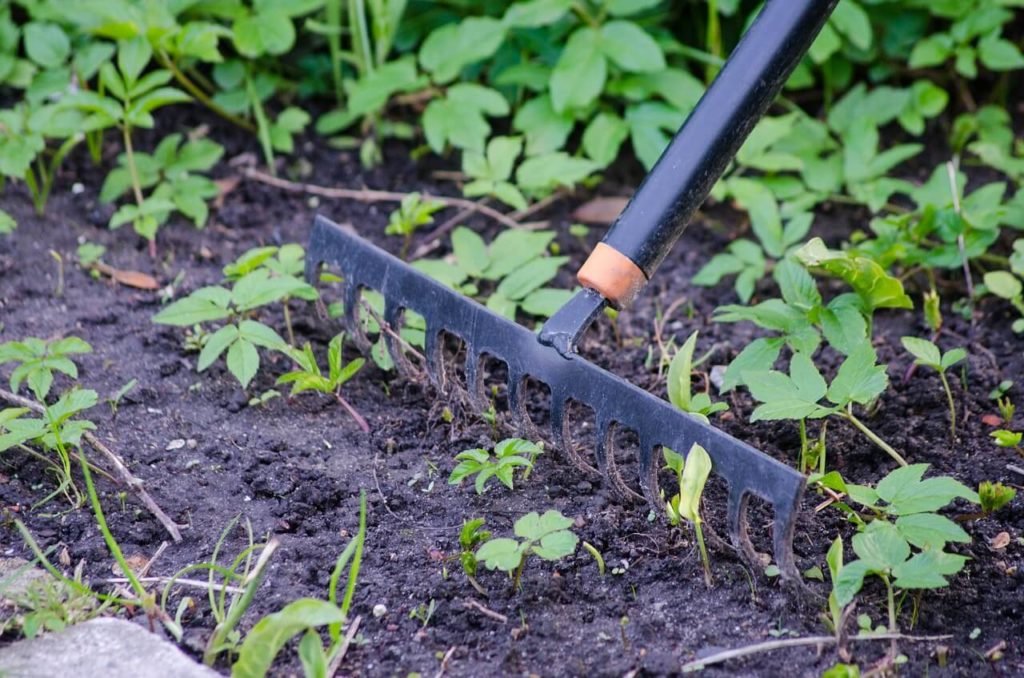
The leaf rake will do the obvious and help you rake up leaves. It’s also good for catching pieces of roots or other debris that remained on the surface after turning over the soil.
Find out more about all types of rakes!
Hand Tools
Once you have the garden bed prepared with the help of the larger tools, it’s time to get into the finer work. In many cases, the tools here will be ones you use throughout the season to take for your plants.
Trowel
A trowel is a small, pointed shovel. It can be used to dig holes for bulbs or for transplanting plants. Whether you’re moving seedlings, repotting potted plants, or digging up plants to move them to a better space, this will be your tool of choice.
Check out our garden trowel reviews
Trowels are also great for weeding, especially when you want to be sure you get to the roots. Narrow-bladed trowels, in particular, are helpful when you’re trying to get a stubborn weed out of from among your flowers or vegetables.
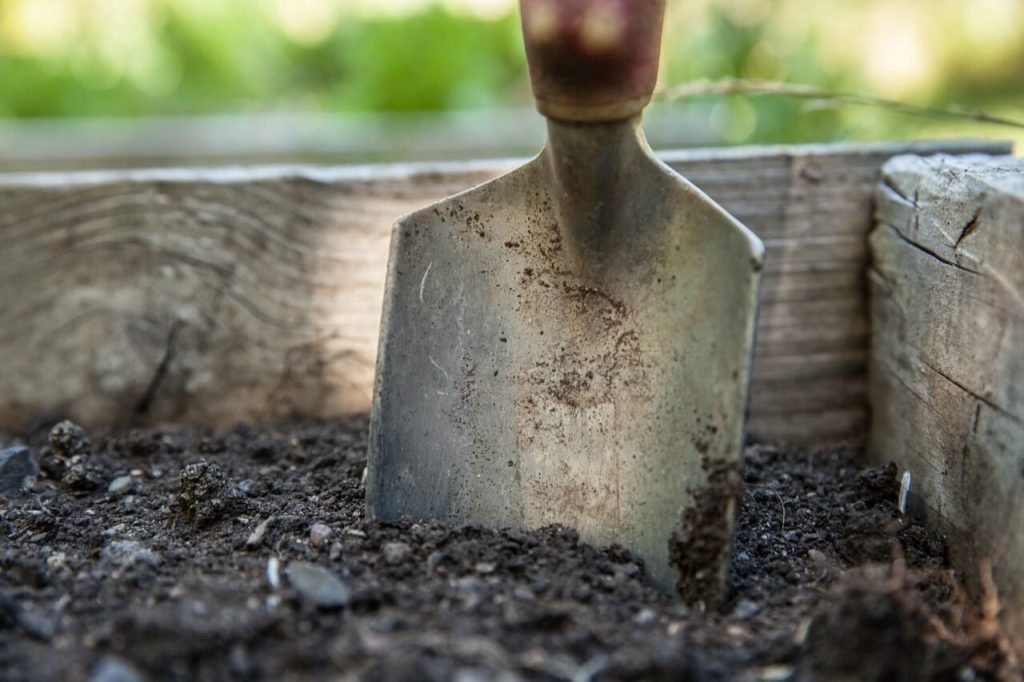
Small Garden Fork
A miniature version of a garden fork is a huge help for finer work, especially when plants are already in place. It can help break up clumps of soil that form during the year. It can reach between plants to pull out debris and weeds.
Dibber
Here’s one you might not be as familiar with, or at least not know by name. A dibber is almost like a spike. Just jab it into the ground to open a hole for seeds, bulbs, or transplanting seedlings.
Garden Hose
You know what a hose is for, of course. Just be sure you get one of the right length and that will hold up well over time. Longer isn’t necessarily better when it comes to hoses!
Find out more about the best garden hoses!
Also, make sure you have a nozzle that allows you to water your plants with a gentle spray; this is almost always more effective than a heavy stream of water which could wash away soil or even damage your plants.
Pruning Shears (Secateurs)
Secateurs are another name for pruning shears. These are the smaller type of shears and will allow you to clip off small branch or roots that interfere with your garden.
Learn more about pruning shears and find some great options!
Depending on the type of plants you have, you’ll also want them to help trim away dead stems or other areas that need to be trimmed back. Pruning shears are great with lightweight work like this.
Watering Can
Sometimes a hose isn’t the best way to water your plants. You might be worried about the force of the water or your garden area might be smaller and not warrant a hose. You might have potted plants that you want to water individually. Or you could have certain plants that need extra water or special attention.
Looking to buy a water can? Here are some great options!
A watering can comes in handy – just be sure to get one that’s easy to carry and pour from, and that has a good nozzle that allows the right amount of water!
Wheelbarrow
A wheelbarrow can serve a lot of purposes, although it was a toss-up between putting it with essential tools or optional ones. In the end, though, we think the utility it provides makes it too useful to skip, except for very tiny gardens.
This tool is so important because it can carry almost anything – including the rest of your tools. Without this, you might have to make several trips just to transport everything you need to do the work.
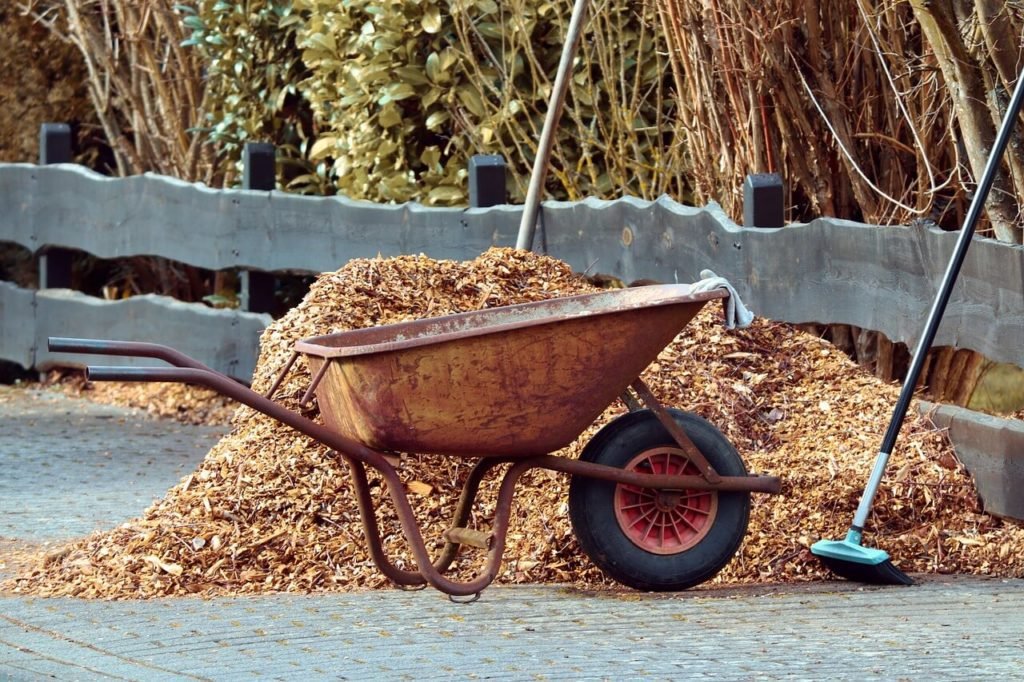
At the same time, it’s also great when you’re doing composting, saving energy and time as you transport the compost from the heap to the garden.
It will be rarer that you have to move soil or other materials, but those times will stop pop up. Also, the wheelbarrow will find plenty of other uses for non-garden projects. So it’s definitely worth having!
Hat, Gloves and Knee Protection
It’s important to never forget your own safety and comfort, and a hat, gloves and knee protection are keys for that.
A wide-brimmed hat – whether you like the style or not – is going to help protect your face and the back of your neck from skin cancer.
Gardening gloves will help you avoid blisters and cuts while you’re working. And since so much of your time gardening is spent on your knees, be sure to treat them right. They also help protect you from thorns and poisonous plants.
Knee pads of some sort are almost a necessity. There are also pads you kneel on rather than wearing them.
Some Great Additional Garden Tools
There are many other tools that can help make gardening even easier. Some may be ways to make your chores even simpler, while others only apply in certain situations that might not apply. But you may want to consider some of these, depending on the circumstances.
Hedge Shears
If you have hedges or plants with woody stems in or around your garden, hedge shears are going to come in hand. You’ll want to keep hedges trimmed to make sure they stay healthy and neat as well as not intruding on your garden.
But the shears also come in handy if you have flowering plants in your garden that have woody stems. Rose bushes and azaleas are just two examples that come to mind.
Ax or Hatchet
Again, if you’re dealing with plants with woody stems, an ax or hatchet can come in handy. This would be true if the stems are more like trunks of trees, or if you’re stuck getting rid of a full bush or plant. You could also use them to trim off dead tree branches.
They can also be used to cut off roots left behind from trees or bushes so that they’ll be easier to pull out of the ground.
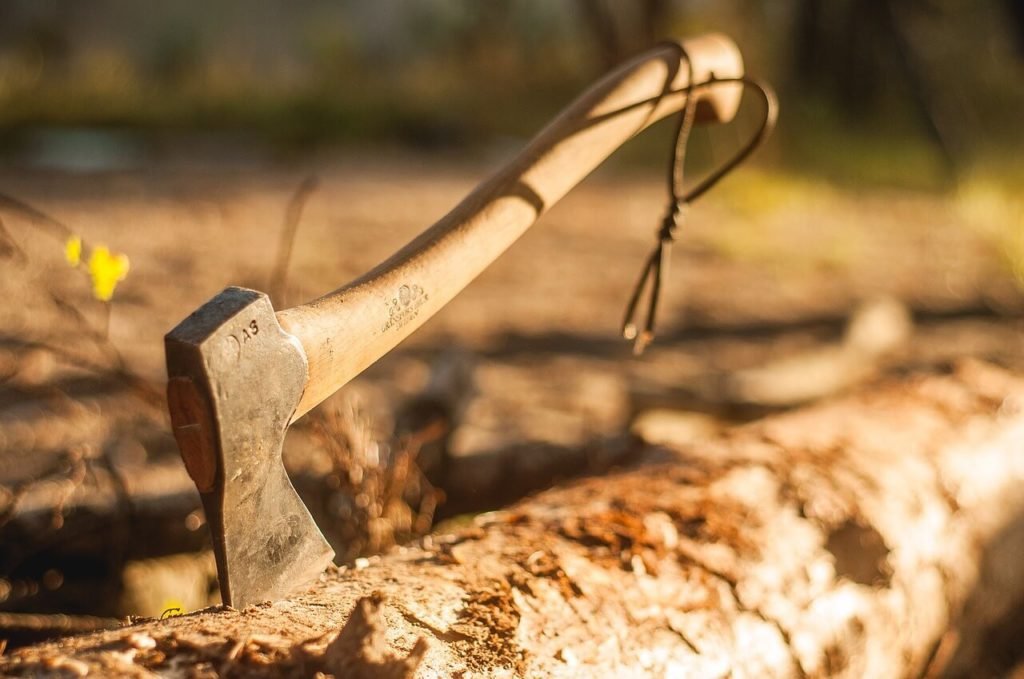
Step Ladder
Of course, sometimes that cutting or trimming may be overhead and a bit out of reach. A stepladder can help you get to branches that are just a bit too high.
Be sure to observe all ladder safety precautions!
Pickaxe
If you have really compacted soil or a lot of rocks that you have to pry up, you might find a pickaxe handy. While it does require a lot of energy to use one and can be tiresome especially for the shoulders, it’s particularly useful if you’re dealing with larger rocks where you need some leverage to pry them up. It could also come in handy if you’ve already hacked off roots but need to pry them out of the ground.
What to Look for in Garden tools
When picking out your tools, you want to be sure they’re sturdy as well as comfortable.
Be sure to select tools with strong handles that won’t bend or break after just a little use. Wooden or metal handles are best.
You also want tools that are assembled well. If the handle is metal, you may have an entire tool forged together, or at least welded. However, if the handle is wood or two pieces of metal are used, be sure they are fastened tightly. Check to make sure the blade or “working part” of the tool is screwed to the handle. The ones where it’s inserted into the handle (or the handle inserted into the end) will likely come apart easily, making them almost impossible to work with.
When possible, see how the tool feels in your hand before you buy it. Make sure it fits comfortably. What’s good for someone with large hands may not work well for someone with smaller hands, and vice versa.
Finally, be sure you can have a firm grip on the tool. Tools that don’t have much purchase will allow your hands to slip, which can cause all sorts of irritation and injuries.
Conclusion
Working in the garden is a great way to let off stress, or at least to create a beautiful feature in your yard. Getting the right tools will, of course, make the work easier and go by faster. We’ve included the basics here and you may find other tools for your particular needs as you go along. Happy gardening!

